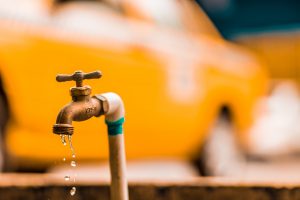Pipe relining is one of the most used procedures when it comes to repairing broken pipes. The process of relining pipes utilises materials like polyester, epoxy, vinyl ester, silicate and resin that reinforce the pipes, so they are stronger than the basic PVC pipes.
Australian businesses and residential homes get this service carried out to ensure their pipes won't decay easily and to make them last strong for up to fifty years.
Pipe relining is effective because of the care step by step process it has. There are a few things that you need to pay attention to when relining pipes:
Plumbers need to check everything before the lining is prepared
Before you apply the lining to the pipes a plumber will need to do a few checks to ensure everything is in order and there are no blockages that may have been missed which will cause problems when relining the pipes. Sometimes it is good to make sure that all the drains are clean before starting the relining process. If everything gets the tick of approval, then everything will need to be measured and products ordered.
The lining preparation
The plumbers will have an idea of how much substances they will need to have for the job. Inversion pipe relining is used to produce Epoxy, resin, polyester along with other important substances.
The glass fibre reinforced plastic UV pipe relining will also be mixed in. this is the substance that will create the long-lasting effectiveness. The important step here is to ensure that when the mixture is poured into the liner that is it rolled around properly to surface all of the pipes. You need to ensure the mixture is well distributed around the pipe.
Inserting the pipe lining.
Inversion pipe relining uses specialised inversion drums that blow the liner into the parts of the pipe. The device will ensure all the substances have coated the surface. It will also perform a process to the pipe so the other side can undergo the same process while checking for strength and durability. This is an important step to ensure the durability and strength levels are met.
Cooling the resin coat
After you have poured the mixture into the regions of the pipe you need to allow the resin to dry. You can let it cool by itself which will take a few hours, or you can cool it by using water. Up to 70% of waiting time is reduced to cool the resin when using this method. But ensure you allow enough time to dry.
Scraping off excess materials
Once the resin has cooled you need to remove the excess that is surrounding the damaged pipe. Inspection pits and junctions are common for areas off excess materials when it comes to pipe relining.
You need to ensure that you do a final inspection once everything is ready to ensure that the damages have been repaired. This is important to ensure everything is fixed otherwise you could face more repairs and blockages down the track if the first repair was not done correctly the first time around.
These are the main things you need to pay attention to when pipe relining but ensure you use a professional plumber or if you choose to do a DIY job make sure a plumber looks over the finished product to ensure you have done it correctly.
The role of plumbing engineers
Now the ones who are responsible to ensure the smooth run of the pipe relining process are the plumbing engineers. They make sure that all of the steps mentioned above are conducted properly to avoid more drainage problems in the future. However, take note that pipe relining is not the only important thing when it comes to the construction and maintenance of a running infrastructure such as drainage system.
Plumbing technology requires the design, preparation, design and installation of systems which are connected to construction or facility, including drainage and water distribution.
The role of a plumbing engineer usually intersects with other aspects of civil and mechanical engineering. They operate on systems which include standard plumbing for pipes, toilets, and water supplies, frequently on a big scale. They also execute specialized work, such as domestic water access, sewer and stormwater drains, and the pipes components of a fire suppression system.
Some Contributions of Plumbing Engineers to Construction
Plumbing engineers are invaluable for the security and safety of new buildings. A plumbing engineer concentrates on a"whole-building" concept that fuses the organic methods of recycling water, air, and waste with critical elements of a structure's design. Here are some of their notable contributions in construction development.

Storm Water Systems
Rainwater, stormwater, and snowmelt drainage are vital concerns when planning a building's plumbing.
Plumbing engineers help keep the structure free from water damage and flooding. They draw containment ways and procedures to take care of stormwater that will not subject the external environment to undue anxiety. For instance, they're responsible for ensuring municipal drainage systems aren't strained by the discharge of too much water at once from a building's pipes.
Domestic Potable Water
It is the plumbing engineer's responsibility to ensure a continuous supply of safe and potable water for the infrastructure in Australia.
He or she'll create systems that link the water source to fire suppression systems, plumbing fittings, process equipment, irrigation systems, cleaning systems, and much more. When designing these programs, the plumbing engineer should conserve and reduce water use as much as possible.
Sanitary Sewer
A sanitary engineer might also be called upon to design the sanitary sewer system to get new construction going. This can reach a point where the sewer hyperlinks to an onsite disposal program, a municipal sewer system, or even a technical containment site. This helps streamline the normal wastewater that's produced as part of the everyday activities in an infrastructure.



